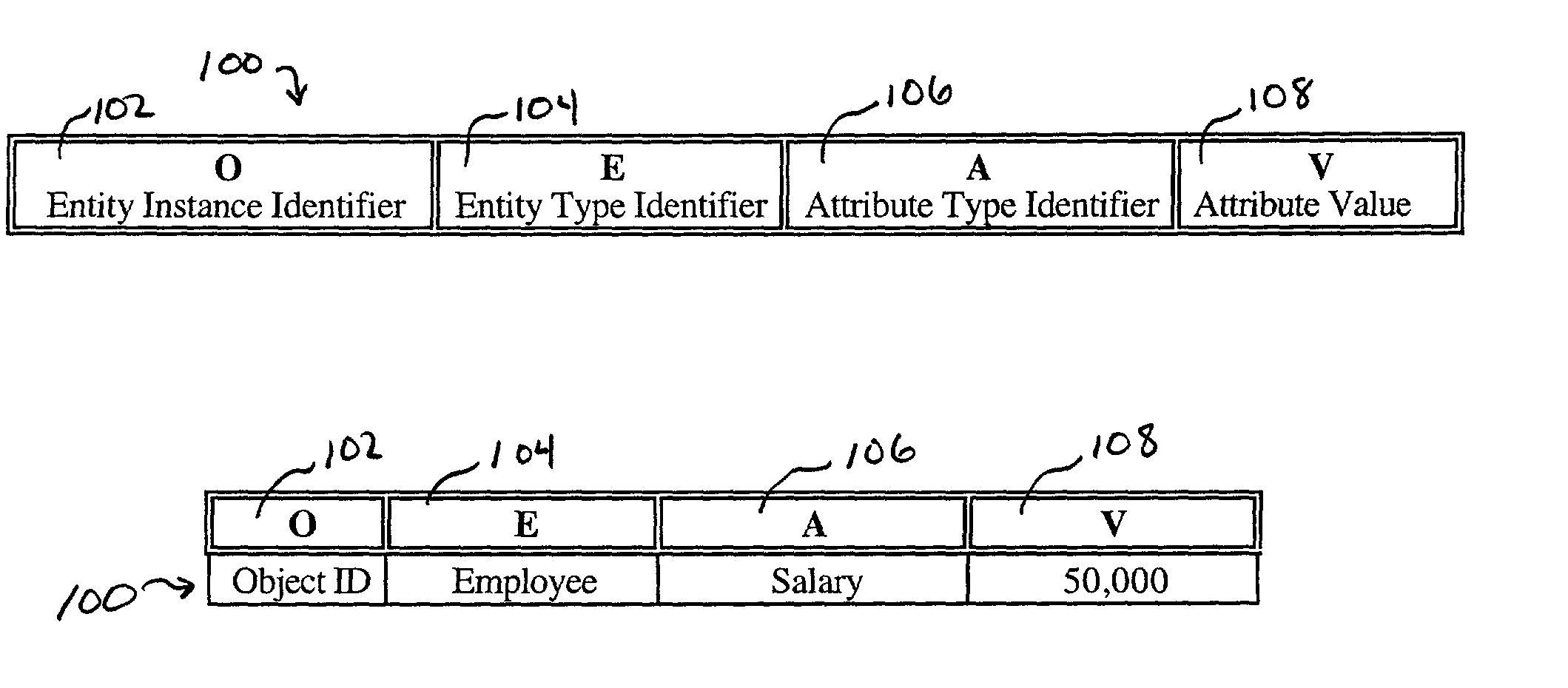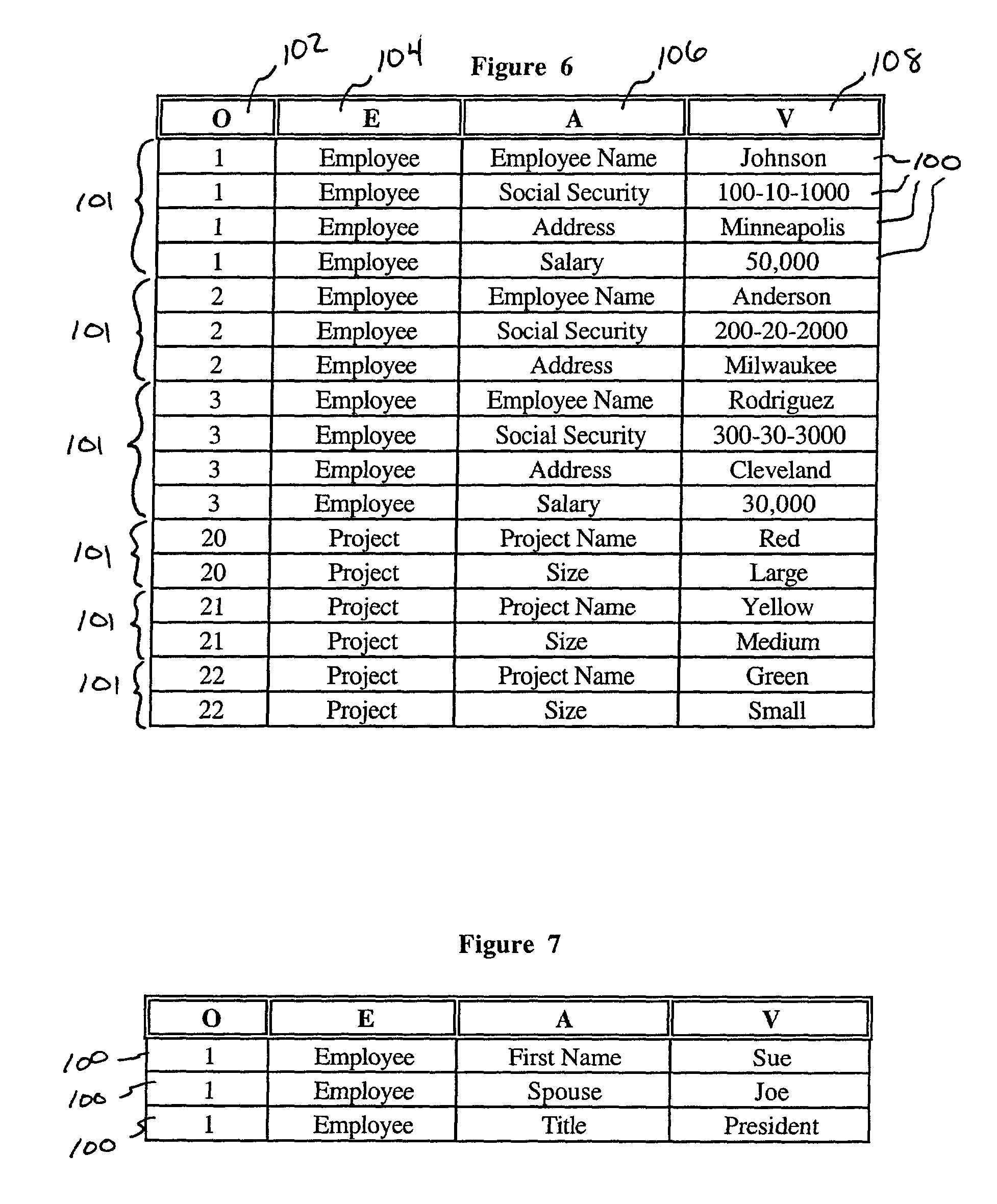Data cells and data cell generations
- Summary
- Abstract
- Description
- Claims
- Application Information
AI Technical Summary
Benefits of technology
Problems solved by technology
Method used
Image
Examples
Embodiment Construction
1. Prior Art
[0037]FIGS. 1 through 3 show three relational tables as would be used in the prior art. The first table 10 shown in FIG. 1 contains employees. There are four columns in this table 10, namely employee name 12, social security number 14, address 16, and salary 18. These columns 12, 14, 16, and 18 define the different types of data that can be contained in table 10. Table 10 also contains three rows 20 of data. Each row 20 contains information about a different employee in the table 10. Data values for a relational data table such as table 10 are determined by finding the field that exists at the cross section between a particular row 20 and a particular column 12, 14, 16, or 18.
[0038]Similarly, the second table 40 shown in FIG. 2 contains information about projects that employees might work on for their employer. The projects table 40 shown in FIG. 2 contains only two columns, namely a project name column 42 and a project size column 44. The projects table 40 contains info...
PUM
 Login to View More
Login to View More Abstract
Description
Claims
Application Information
 Login to View More
Login to View More - R&D
- Intellectual Property
- Life Sciences
- Materials
- Tech Scout
- Unparalleled Data Quality
- Higher Quality Content
- 60% Fewer Hallucinations
Browse by: Latest US Patents, China's latest patents, Technical Efficacy Thesaurus, Application Domain, Technology Topic, Popular Technical Reports.
© 2025 PatSnap. All rights reserved.Legal|Privacy policy|Modern Slavery Act Transparency Statement|Sitemap|About US| Contact US: help@patsnap.com



